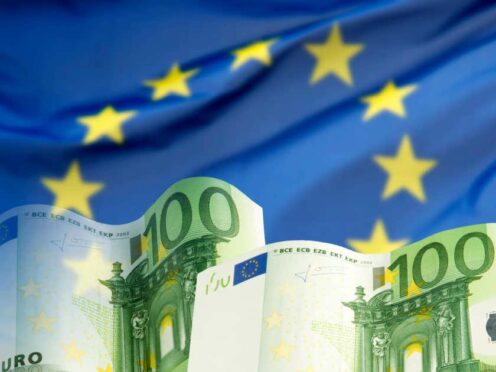The inflation that has ravaged the European economy eased again in February, falling to 2.6% as high interest rates, moderating oil and gas prices, and sluggish growth held back price increases in stores.
February’s figure for the 20 countries that use the euro currency compares with 2.8% from January, the European Union’s statistical agency Eurostat said on Friday.
Inflation is now far below its peak of 10.6% in October 2022, which it hit after Russia cut off most supplies of natural gas and sent energy prices through the roof.

But the return of inflation to 2%, the goal set by the European Central Bank, is taking time.
Food inflation eased to 4% from 5.6%, offering some relief to people on modest incomes who spend more of their pay on necessities than the well-off. Another factor was energy prices, which fell by 3.7%
One key sign that inflation is losing steam was so-called core inflation, which excludes swings in food and fuel prices. The figure, closely watched by the European Central Bank as a measure of underlying inflation pressure in the economy, came in at 3.1%, down from 3.3%
Prices spiked after Russia cut off most supplies of natural gas to Europe, sending energy prices through the roof, and as the post-pandemic rebound led to logjams in supplies of parts and raw materials.
Those troubles have eased, but lost purchasing power slowed the economy and many workers have yet to catch up through new wage agreements.
The drop in the inflation rate brings the European Central Bank closer to achieving its goal of 2% inflation, the rate considered best for the economy.
The central bank for the eurozone swiftly raised interest rates to squeeze inflation out of the economy, taking its key rate to a record high of 4% in September.
The eurozone showed zero growth in the last three months of last year, following shrinkage of 0.1% in the quarter before that.
Worries about growth and moderate inflation have shifted the focus to when the ECB might start cutting rates. The bank’s rate-setting governing council meets on Thursday but is not expected to change rates yet.
The council and ECB president Christine Lagarde are likely to wait for more data on wages and prices to be sure inflation is under control before cutting rates in June, said Carsten Brzeski, global head of macro at ING Bank.
